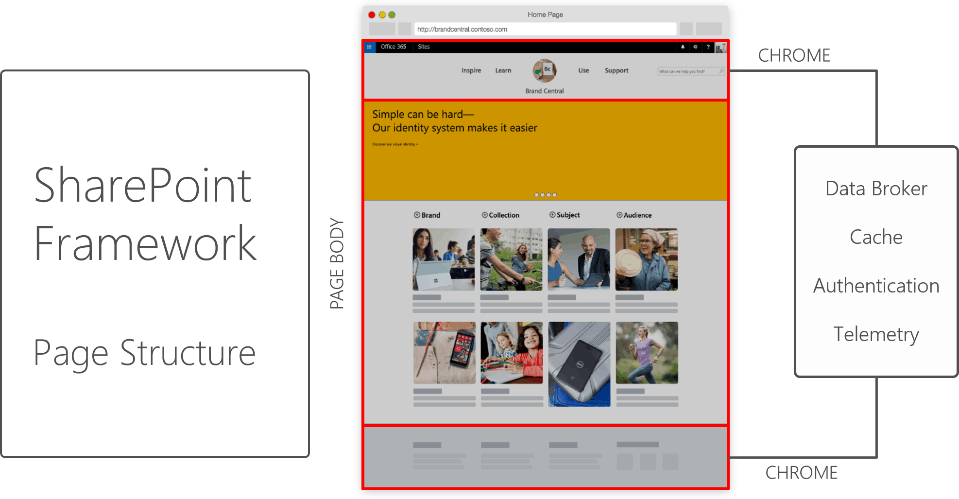The Future of SharePoint event in San Franciso has been a Pandora’s box of information. As a “cloud first, mobile first” vision towards the management platform, Microsoft is embracing the open source community by bringing developers towards the SharePoint Framework. The SharePoint Framework is “a Page and Part model that enables fully supported client-side development, easy integration with the Microsoft Graph, and support for open source tooling.” To put it simply, developers will be able to create and upload Web Parts directly to customize SharePoint.
Customers that use Sharepoint previously used third party modules to edit and customize the Team page. Now both first and third party developers can build new tools and experiences that will make the Team page much more productive for users.

Using Yeoman for the SharePoint templates, developers are able to edit the code with Visual Studio, package it with Gulp, and actively test the coding out through SharePoint Workbench where they can test without being connected to the SharePoint publishing site. As more web parts are created and shared, pages will begin to be able to fully immerse the user in relevant context, data, and social networking to their goals. The framework supports a responsive design that will change according to the device seamlessly, making it available anywhere and on the fly.
In this video posted by Microsoft Mechanics, Daniel Kogan went into detail on how to create solutions through the open and connected SharePoint Framework.
Once the script is ready to ship, developers are able to upload immediately from CDN to the SharePoint publishing site. Kogan also noted that Microsoft will be sharing a lot of the User Experience code with the community on github. The framework will be shipping to SharePoint Server On-Premises first but the best way to stay up to date is on the patterns and practices website on GitHub.

